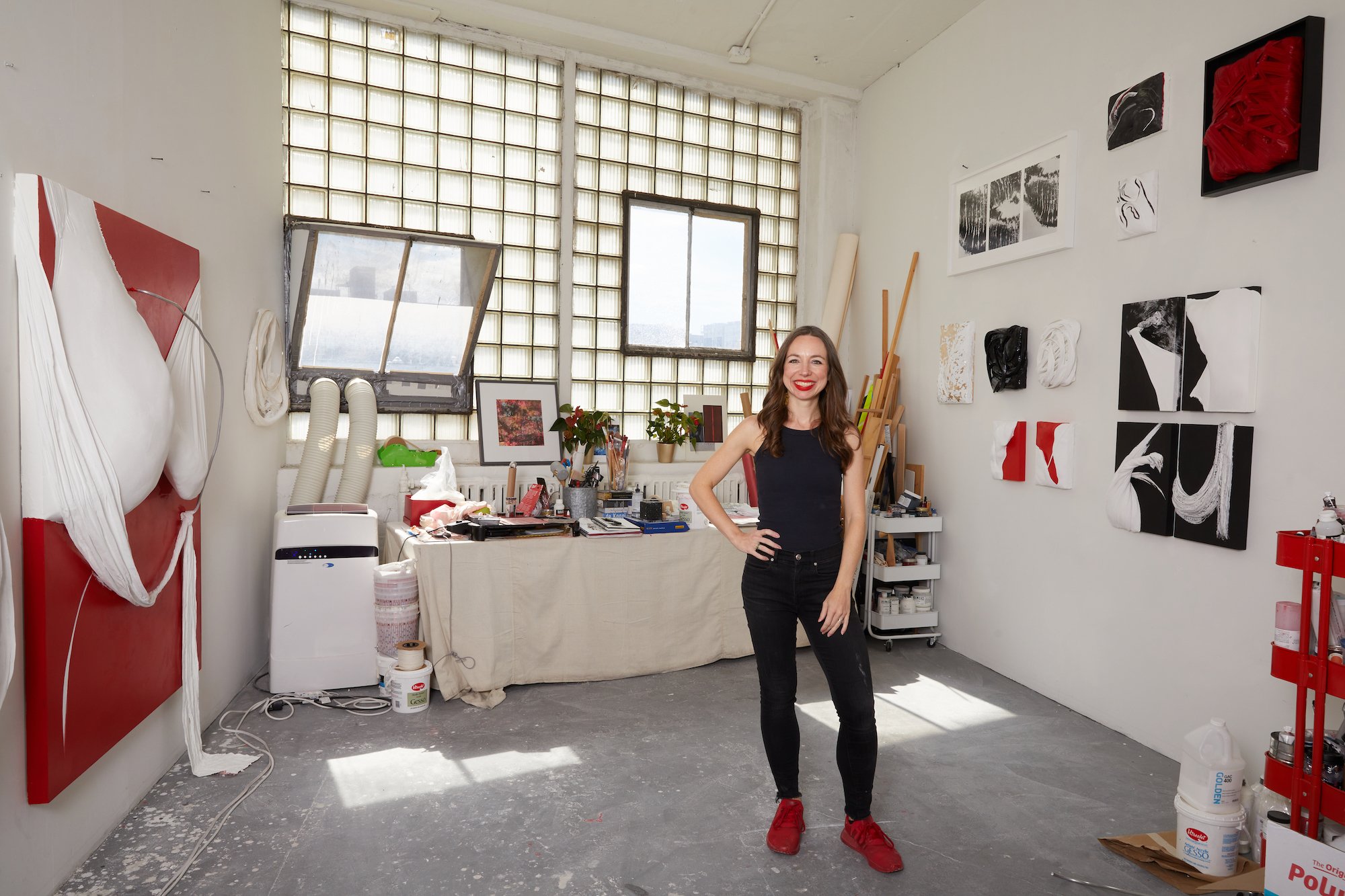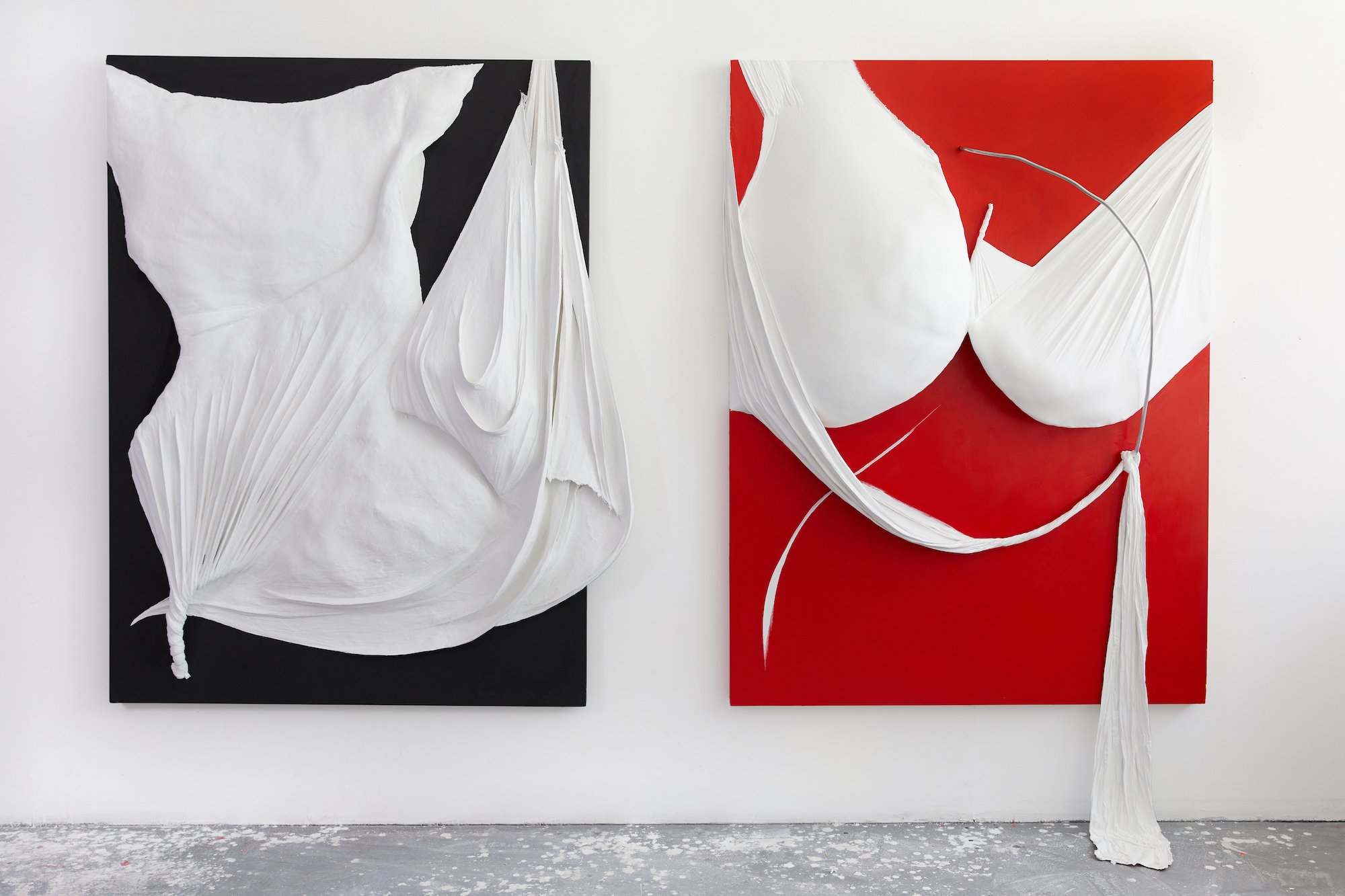Chellis Baird On Embracing Negative Space
As I step inside Chellis Baird’s studio, I’m immediately entranced by all the soft textures — samples of silk, lace, and other fabrics cover the space’s visible surfaces, beckoning to be touched. The mixed-media artist focuses her practice on tactility, and she’s well aware of her craft’s woman-centric history. Instead of shunning its link with domestic work, she chooses to embrace these complexities.
“I’ve always felt super mesmerized by the versatility of fabric,” Baird says. “Yes, it’s known as ‘women’s work,’ but I think of it as a universal language. Did you know, for example, that the first computer was conceived through the structure of a loom?”
Baird’s interest in materiality dates back to her upbringing in Spartanburg, South Carolina, one of the largest textile manufacturing towns in the United States during the 19th century. She studied at the Rhode Island School of Design and moved to New York in 2005, getting her start working for fashion brands such as Ralph Lauren and Donna Karan. After visiting various mills in Europe for business, Baird began to recognize fabric as a distinct form of communication across cultures, witnessing the many meanings a work could convey depending on how it’s woven, printed, or draped. Still, she didn’t decide to take herself seriously as an artist until an emotional encounter back in Manhattan.
“I remember being at the MoMA and seeing this painting by Barnett Newman that made me cry,” Baird tells me. “I felt like something in me needed to be expressed. From then on, I became less shy about my practice and started to develop my visual vocabulary. I thought ‘Why am I buying a canvas when I have all this fabric? I can make my own canvas.’”
For her first solo show in 2021 at the Myrtle Beach Art Museum, Tethered, Baird employed fabric, paint, and wood to create monochromatic forms extending beyond the edge of the canvas. After receiving a fellowship from the National Arts Club in 2022, she unveiled The Touch Of Red, an exhibit showcasing works rendered entirely in red. She’d been chewing on the concept since giving birth to her son in 2020. Colors carry a range of complicated associations, she explained, and red could connote anything from seduction to war. To play with this idea, Baird titled some of the works after her favorite lipstick from MAC, Lady Danger, and invited viewers to shade in an enlarged photo of her lips.
“It was a way for me to reclaim my body as a woman after giving birth,” she says. “While pregnant, your body becomes a vessel for this other being, which is a beautiful experience in its own unique way. But after the birth process, I wanted to feel like me again, and equipping myself with my favorite color and diving in was a great vehicle for me to push forward.”
Now expecting her second child, Baird walked me through her recent studio work while donning her signature red lip and a matching Betty Boop shirt. Mood Machines, one of her current series, expands on her curiosity with color by incorporating painted fabrics dyed with layers of pigmented wax, spray paint, or acrylic. Like the sculptor Louise Nevelson – whom the artist cites as an influence – Baird is a trained dancer, which manifests in her compositions through her emphasis on fluid movement and the body. Peacock Pink, one work from the series, features soft shades of pink and gray, contrasting the femininity of ballet slippers with the cold aluminum bars inside a dance studio.
“Gray was considered a chic color in 18th-century France because of a Louis Vuitton luggage Marie Antoinette owned, which was highly coveted at the time,” Baird says. “I love historical tidbits and personal connotations and using these to explore materiality and color.”
In her new series Unveiling, she traces the origins of lace to Renaissance Italy, where Venetian noblewomen perfected the buttonhole stitch in the 1400s using bobbins. King Louis XIV popularized lace in 17th-century France by establishing competing mills and poaching Italian and Belgian artisans to set up schools, later inciting a “Lace War” with Italy. Baird sources samples from famous French lace mills like Darquer & Méry and uses them as stencils or inspiration for her work. Sustain, a large-scale piece, resembles carved ivory with its delicate and ethereal appearance, mirroring the repeated looping of a buttonhole stitch through fabric, wire, and wood.
“There’s something very intimate about the color white’s implied purity. Being pregnant again, I’m thinking a lot about reclaiming innocence,” Baird says. “I was also a quilter as a child, so I've always been fascinated by ‘crazy quilts’ – I even inherited one from my grandmother's family.”
Her deep dive into French history anticipates a show in Paris next year, which she’s eagerly preparing for. Soon, the artist will reimagine her love for red in a group exhibition at the Nassau County Art Museum opening on July 20th. As with her past exhibitions, Baird invites viewers to sit with her work, consider each element, and interpret the big picture gradually. She likens understanding her art to the act of undressing – a layered process that reveals its intricacies over time. Only by slowing down to experience the negative space can we appreciate the freedom it provides.
“At the end of the day, you always do what’s best for the work. Sometimes that means knowing when to stop and revisit a piece. Other times, it’s about urgency and confidence. There’s a balance and choreography to each series,” she says. “After feeling very restless in the studio last year, I finally feel at peace with my practice, allowing these new discoveries to unfold at their own pace.”
You Might Also Like:





